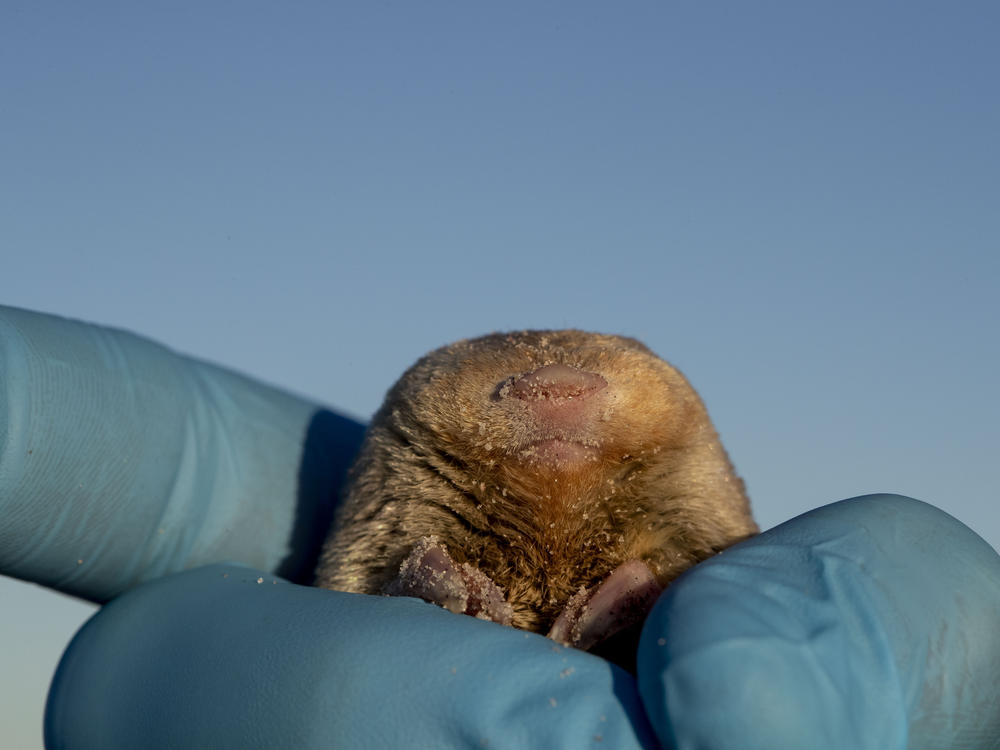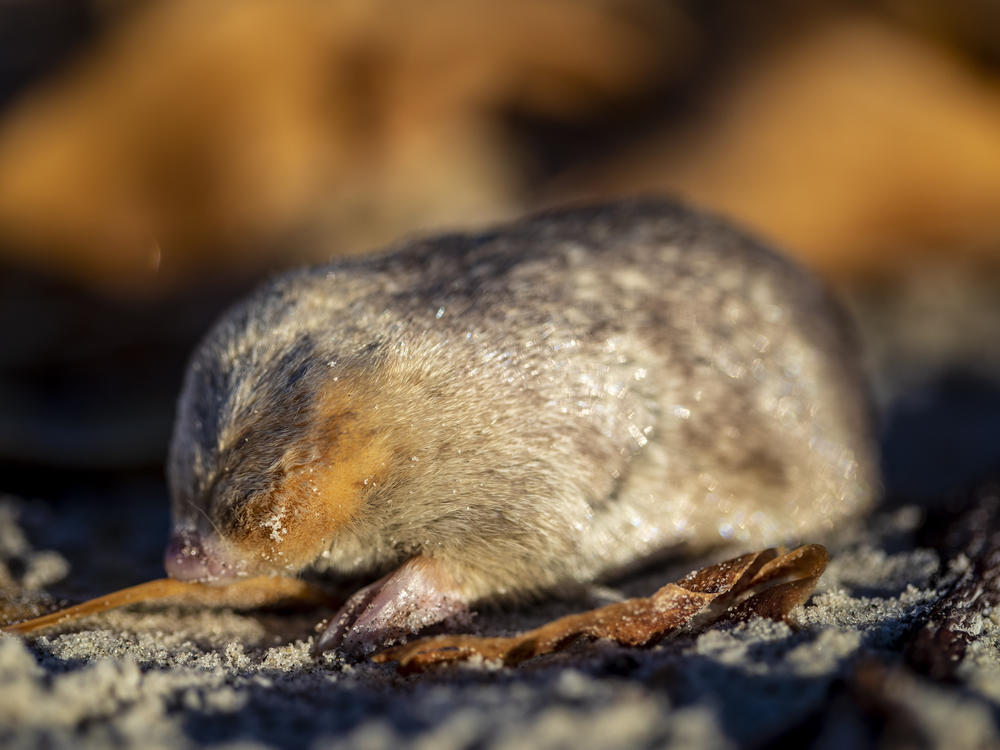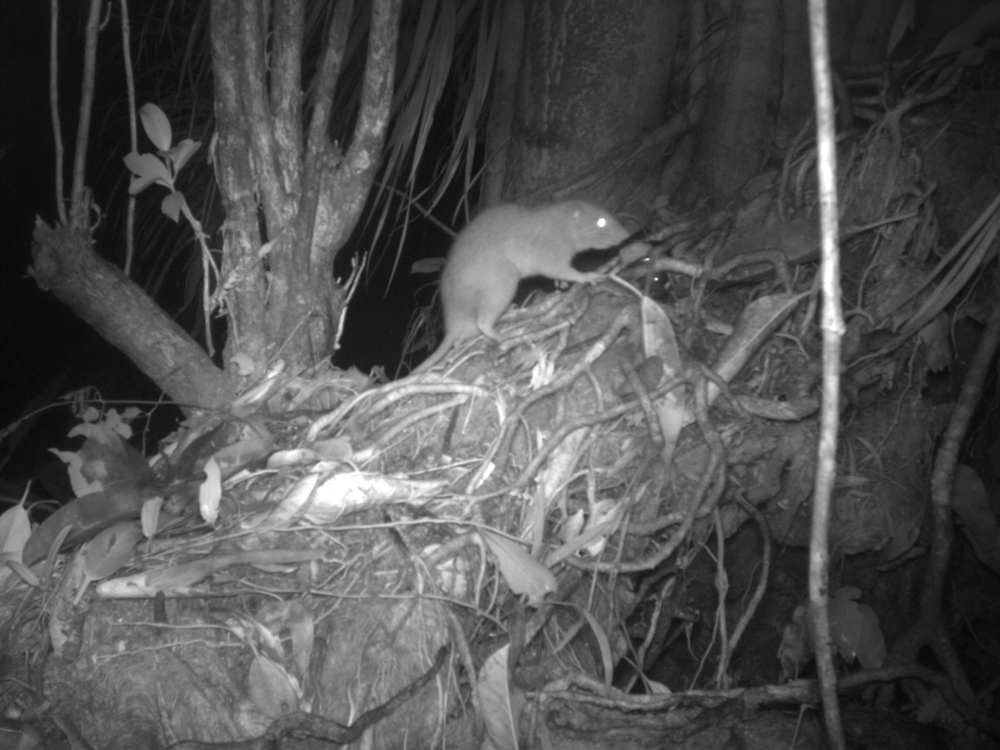Section Branding
Header Content
Once lost to science, these "uncharismatic" animals are having their moment
Primary Content
Historic numbers of animals across the globe have become endangered or extinct. And according to the United Nations, the rate at which species are being pushed to extinction is accelerating.
But, some of these species sit in limbo. They're not definitively extinct, yet they're missing from the scientific record.
Species gain this "lost" status when there hasn't been a trace of them in 10 years, according to the International Union for the Conservation of Nature.
"Species become lost quite often because they're threatened by impacts caused by humans. So for example, climate change, pollution, habitat clearance," says Thomas Evans, a conservation scientist at the Free University in Berlin. "Their populations are shrinking in size, and that's why they can't be found. It means they're likely to be on the verge of extinction."
These species raise a conundrum for scientists and local communities.
If a lost species is indeed still alive, they need protections to save them from the brink of extinction. But if there's little or no evidence a species is around, the money needed to conserve land or to fund studies confirming their current existence can be difficult to muster.
To complicate matters, there is a disparity in which species are searched for and protected, as evidenced by a recent study in the journal Global Change Biology. For the study, Evans and his collaborators created a database all lost and rediscovered tetrapods in order to understand what factors contribute to the likelihood that a species is rediscovered.
"Charismatic" animals have better odds of being rediscovered and reaping the associated protective benefits of that rediscovery. They tend to be large, cute or furry. This has left some "uncharismatic" lost species to wither away outside of human view, when they might have been saved with measures like captive breeding or habitat conservation.
Historically, rodents have been one group of animals to bear the brunt of this discrepancy. Around a third of the mammals Evans studied were rodents, but they made up half of the lost mammal species. They are often small, live in remote areas, only come out at night and spend most of their time in burrows — all things that make it difficult for scientists to pin them down.
Evans says this is compounded by the fact that "rodents aren't particularly charismatic. They're not well loved, so people aren't searching for them as much as they are for larger, more charismatic species."
The long journey to rediscover a species
Rediscovering a lost species is not easy. It can require trips to remote areas and canvassing a large area in search of only a handful of animals. The difficulty has forced scientists to reach for the newest technology available to find evidence of animals on the fringes.
One example is in South Africa, where Samantha Mynhardt, a conservation biologist at Endangered Wildlife Trust, has spent years researching golden moles. After seeing a conservation organization list the De Winton's golden mole as one of the most important species to rediscover, she began to talk to collaborators, with whom she would eventually rediscover the mole.
But even starting the project was an uphill battle.
De Winton's mole hadn't been seen in nearly a century, so many of her colleagues were skeptical that it was still around. The burrowing mole was known to elude many of the tools conservationists rely on to identify and track down animals weren't enough to pin down the iridescent critters. For instance, no previous team had successfully trapped the mole. Trapping is a necessary step for traditional DNA collection.
So, her team ended up settling for a mix of scent detection dogs and collecting eDNA, or environmental DNA. As animals go through their lives, they leave small traces of their DNA – hair follicles, skin cells, excrement and other things – that scientists can test for in the lab. The researchers used the dogs to home in on areas where the moles had been and then collected soil samples to test the eDNA in the area.
On an expedition to the west coast of South Africa, Mynhardt and her crew were able to catch a mole. But it wasn't until they later returned to their lab and analyzed eDNA from the soil that they could confirm it was the species of mole they were looking for.
"It was really a fantastic feeling. I mean, the anticipation that had built up to that moment," says Mynhardt. "Once we confirmed it, we were just ecstatic."
From rediscovery to stronger protections
An ocean away, University of Melbourne biologist Tyrone Lavery has a similar story. He spent 14 years researching the Vangunu giant rat that had been lost to western science but was still well known to the people of the Vangunu Islands as "vika," a rodent they saw occasionally.
He struggled to do so — in part, because there are likely very few of them left.
"It's just such a rare animal that few people have been able to see it," Lavery says. Even he, in 14 years of searching for the Vangunu giant rat, has yet to come face-to-face with one.
Lavery's earliest concrete sign that the rodent was alive came from an interaction between the vika and a logging company.
As he was working in the area, the local government greenlit logging in the forests that the rodent lived in. One day, as a tree was chopped down, a vika ran out of it – and one of Lavery's collaborators was able to catch it. The injured rat died shortly after, but Lavery finally had proof that there were rats in this forest.
He redoubled his efforts to find clear evidence it was living in the forests of Vangunu. The work paid off after he planting camera traps around the forest for six months and finally got photographic evidence.
Since his research came out in the journal Ecology and Evolution several months ago, there haven't been any official moves to protect the rat. In fact, before his work was published, the government had approved more logging around the vika's habitat. But shortly after it was published, "all of a sudden, they've now removed their machines and pulled out. So officially, nothing's happened. But unofficially, it seems like there's been a little bit of a change."
While both the De Winton's golden mole and the Vangunu giant rat could be on their way to vital protections, the same may not be true for all "uncharismatic" animals.
"People are often keen to go and look for the primates or the large cats or other really charismatic animals, and many people have not even heard of a golden mole," Mynhardt says. "It is sad, because all species on our planet are valuable and worth protecting."
Have other scientific gray areas you want us to cover in a future episode? Email us at shortwave@npr.org!
Listen to Short Wave on Spotify, Apple Podcasts and Google Podcasts.
Listen to every episode of Short Wave sponsor-free and support our work at NPR by signing up for Short Wave+ at plus.npr.org/shortwave.
This episode was produced by Margaret Cirino and Rebecca Ramirez. It was also edited by Rebecca. Anil Oza checked the facts. The audio engineer was Robert Rodriguez.



